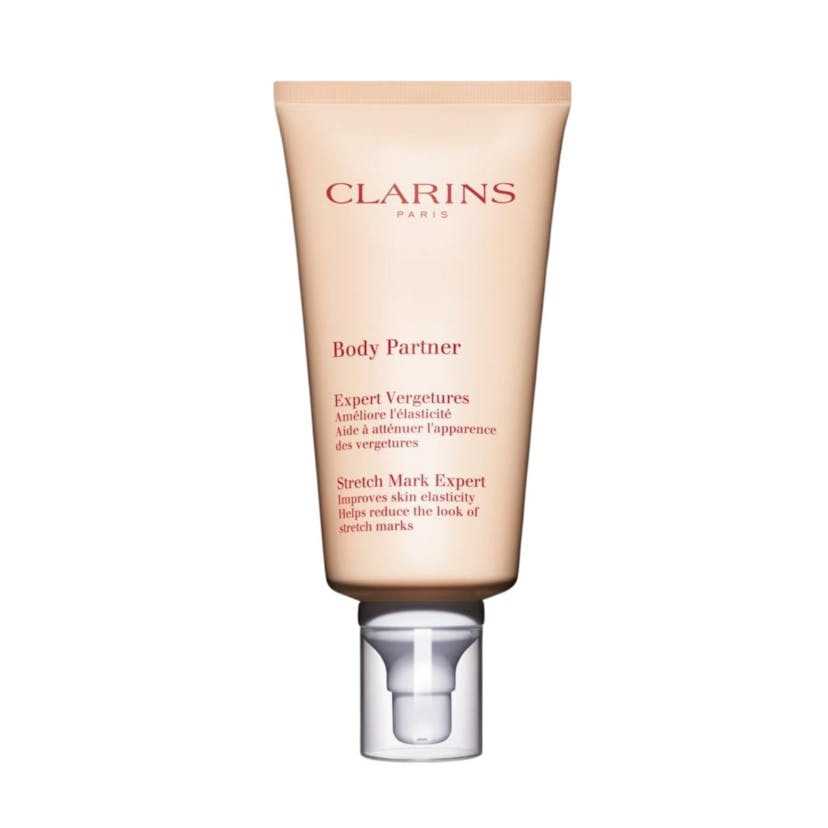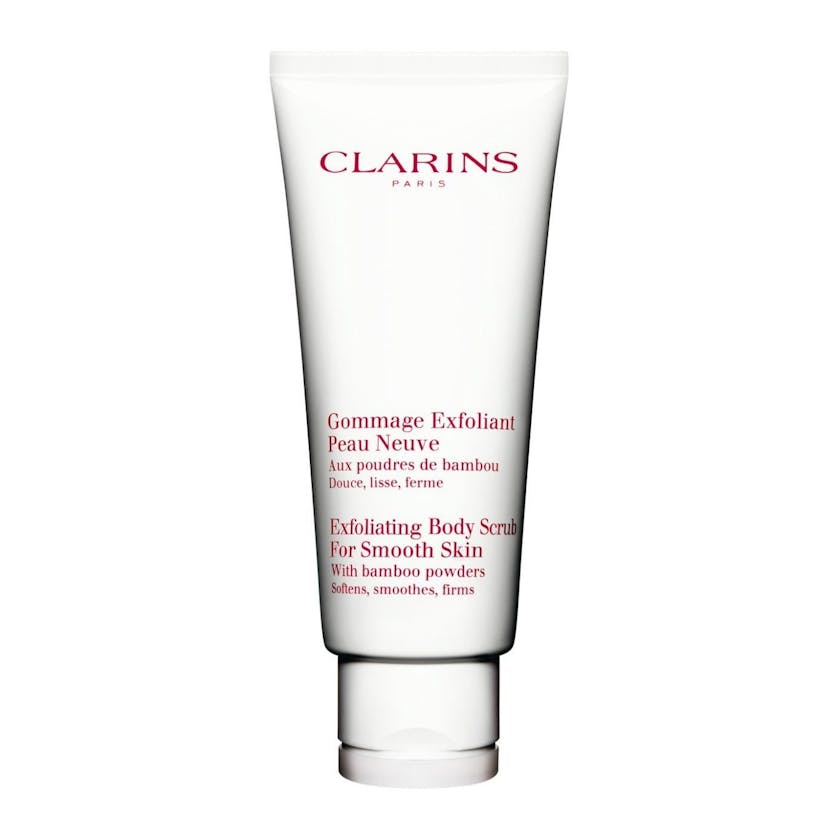Do Stretchmarks Go Away? Here’s What Experts Say
7 minutes read
Do stretch marks go away? That’s a question many ponder about, so if they bother you, you’re not alone. Stretchmarks are extremely natural, estimates suggest up to 90% of people have them, many of which are barely visible. However some are more prominent e.g. after pregnancy, so Beauty Daily turned to leading experts to ask, once and for all, what causes stretch marks, how to make stretch marks go away and preventive measures you can take to make them less of a permanent problem.
Keep reading…
What causes stretch marks?
Stretch marks, also known as striae distensae (SD), are a form of ‘scarring’ that appear where your skin stretches or shrinks. They vary in colour from purple and red, to light grey or whitish, and the first sign stretch marks might appear is when your skin feels itchy and irritated. When you touch them, you might feel a slight ridge or indentation on your skin.
“Stretch marks appear where the body dramatically increases or decreases in size and the elasticity of the skin can’t keep up with the change. Stretch marks appear because of the expansion of the skin but they’re more visible when the skin shrinks back to normal,” Charlotte McHale, Clarins Training Manager, explains.
“For example, in pregnancy, you might get stretch marks but they might not be as obvious after the pregnancy because stretched skin is smooth to touch, but when the bump is depleted it’s more noticeable.”
Stretch marks are not only common amongst pregnant or postpartum women, they can also occur during adolescence, or rapid weight change.
“Stretch marks are ‘tears’ that occur in the skin when your body grows rapidly and the elastic fibres in the deeper layers of skin are stretched and torn,” explains Dr Mia Jing Gao, London-based Consultant Dermatologist. “It is difficult to prevent it from happening completely and most teenagers will get stretch marks from growing,” she adds.
In which areas of the body do stretch marks appear?
You can find these long, narrow streaks in the tummy, breasts, chest, upper arms, legs, bottom, hips, or back. However, McHale stresses that stretch marks appear everywhere you might put on weight.
“There’s no area where it’s impossible to get them. Obviously, they are more common in areas that get bigger more quickly like pregnancy bumps, and anywhere you’re prone to putting on weight like the stomach or thighs.
However, it’s common for those who put on lots of muscles very quickly like bodybuilders, and weight lifters. They might get it in the bicep areas, so anywhere is possible,” McHale explains.

Stretch marks: leave or remove?
While stretch marks aren’t painful or harmful, some people find them unpleasant to look at.
Research shows that stretch marks may have a negative impact on self-esteem. They’re also a common concern among pregnant women whose bodies are going through dramatic changes.
A recent study published in the International Journal of Women’s Dermatology notes that many women are self-conscious about stretch marks and worry about them being permanent.
The study results show that women tend to internalise messages that they should feel ashamed of stretch marks. That sense of shame can factor into a mother’s mental and emotional well-being.
While these studies are telling, let’s get it out of the way: if stretch marks are causing your self-esteem to plummet, know that there’s nothing to be ashamed of. Stretch marks are 100% normal.
And there’s also nothing wrong with finding ways to treat them, to reduce their appearance if you so choose.
How to make stretch marks go away?
Stretch marks are not typically preventable or treatable, but the good news is they do fade over time. “It is not realistic to expect stretch marks to completely resolve once they appear, but the appearance can improve to the point where it’s barely noticeable,” Dr Gao assures.
First, assess your stretch marks:
If your stretch marks have a red or purple colour, that means they still have a blood supply and can be repaired.
However, if the stretch marks have a kind of greyish or silvery colour, they no longer have a blood supply, so they can’t disappear completely.
Here are some things you can do to avoid new stretch marks from becoming permanent.
Treating new stretch marks (red, pinkish, or purple colour)
For pregnancy and postpartum:
Pregnancy stretch marks affect around 8 out of 10 pregnant women. The timing differs from woman to woman but it is usually in the sixth or seventh month.

To prevent stretch marks from lingering much longer, Clarins beauty experts recommend using the Tonic Treatment Oil – Firming/Toning, £42. Use this as soon as you find out you’re expecting, as your skin might have already started changing without you even realising it. So the sooner you can get into a routine of daily application, the better.
Apply a pea-size amount of Tonic Treatment Oil directly on slightly damp skin. Apply liberally on the baby bump area after a bath or shower and massage clockwise.

Continue this routine a month after giving birth until your skin bounces back to its pre-pregnancy state. However, If you start to see the appearance of early stretch marks, apply the tonic oil in combination with Body Partner, £40.
This stretch mark expert cream is specifically created for those who want to avoid the appearance of stretch marks caused by weight fluctuations especially during and after pregnancy.
“Body Partner has an ingredient called Centella Asiatica, also known as tiger grass, which is good at healing wounds,” McHale explains. “Traditionally, that’s what it’s used for. A stretch mark is not a scar when it’s purple or red, it’s a wound. So when it still has blood supply, it can still heal with minimal scarring. You can sometimes get rid of it completely if you use the right products.”
Read next: Healthy Pregnancy Tips: Your Comprehensive Guide To Bump Beauty
For people undergoing weight change:
If you are trying to lose or gain weight, Dr Gao advises keeping skin moisturised, and avoiding rapid weight changes.
McHale couldn’t agree more: “Prevention is better if possible. In pregnancy, you can’t help how quickly you put on weight or stretch your body. Unlike weight gain or weight loss, slowly gaining weight or slowly losing weight are the best ways to prevent stretch marks.”
“Losing weight slowly and steadily is a better way to keep the skin on the muscle than when people lose it suddenly and get a lot of excess skin. Your skin can’t keep up with dramatic weight loss,” says McHale.
Loose skin and stretch marks can also be left over if you have experienced weight loss. So before you go on extreme diets, remember they’re not worth it!
Need some workout inspo? Read Celebrity Trainer Approved Arm Exercises
Treating Old Stretch Marks (greyish or whitish colour)
“If the damage caused by stretch marks is too extensive, then it will scar. Once it scars, you can’t eradicate it anymore. You can only improve the texture of the skin,” says McHale.
Here are ways to reduce the appearance of stretch marks:
1. Apply topical retinoids
Experts suggest the application of topical tretinoin (retinoic acid), which significantly improves the clinical appearance of early, active stretch marks.
2. In-clinic treatments
“In clinic treatments like lasers can be helpful, especially in early phases where the stretch marks look more red. Other treatments like microneedling and fractional lasers have shown some promise,” says Dr Gao.
Light and laser therapies, such as microneedling, are known treatments to effectively stimulate the growth of collagen or promote skin elasticity. Your doctor or licensed esthetician can help you determine which technique is best for you, however, is not recommended to undergo laser skin resurfacing while pregnant.
3. Exfoliating once or twice a week
Experts say a fantastic way to reduce the appearance of stretch marks is through regular exfoliation. So get scrubbing! Exfoliation removes excess dead skin from your body and new skin from your stretch marks.

Beauty Daily recommends using Exfoliating Body Scrub, £32 on the skin and exfoliating in the targeted area using a massage motion. This refreshing, moisturising, and exfoliating treatment (with smoothing natural bamboo powders and a hint of ginger) sloughs off rough, flaky dead skin cells revealing fresh new skin. Also, exfoliation increases product absorption, so anything you put after such as oils and body lotions won’t be used in vain.
Exclusive Clarins Gifts for Mothers

Use code MATERNITY at checkout. Offer available today until December 31, 2022 or whilst stock last.
Read next: Cellulite Is Normal: Your Guide To Understanding And Treating It
Sign up for our newsletter
We will keep you in the loop for special offers, exclusive gifts and product news.

